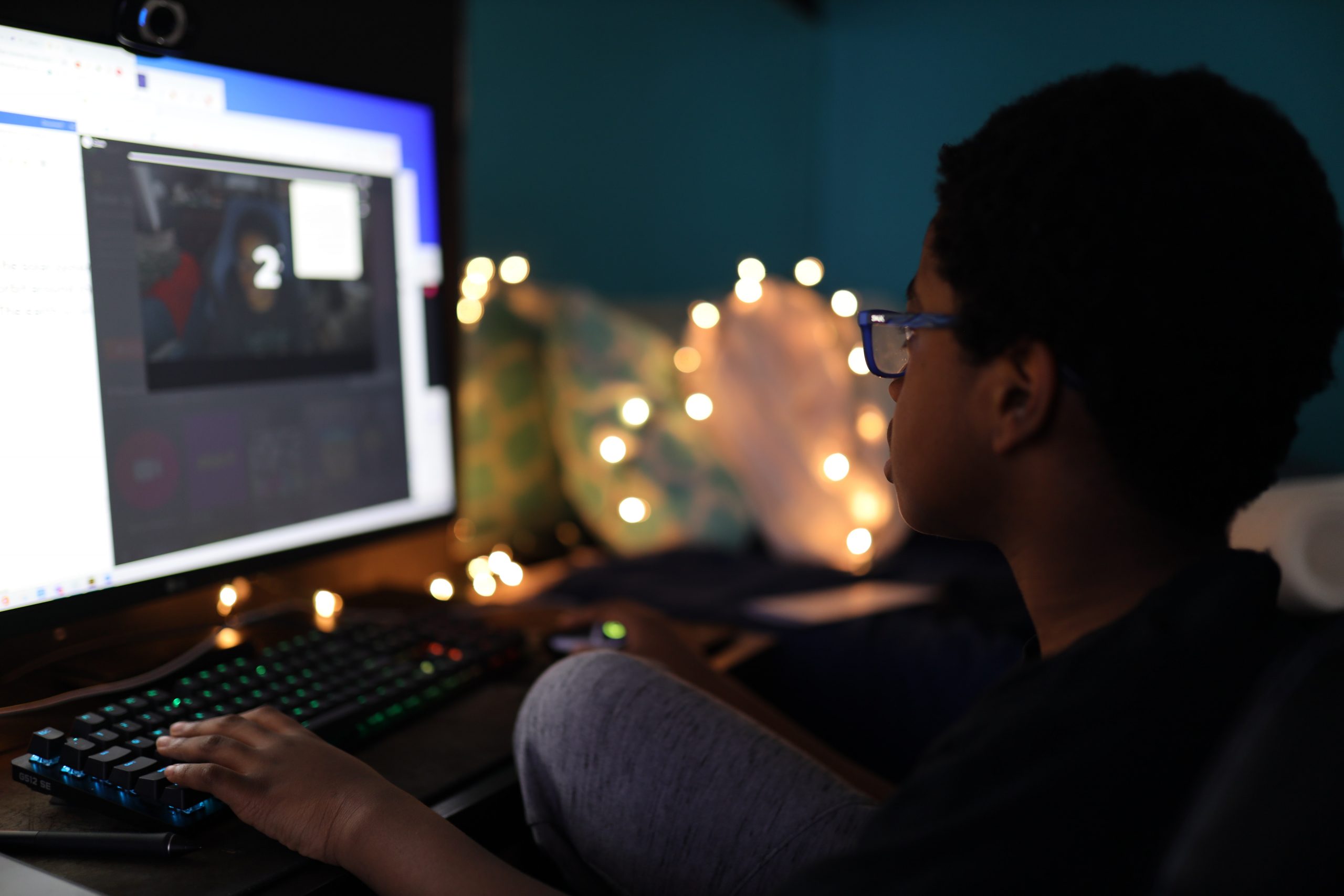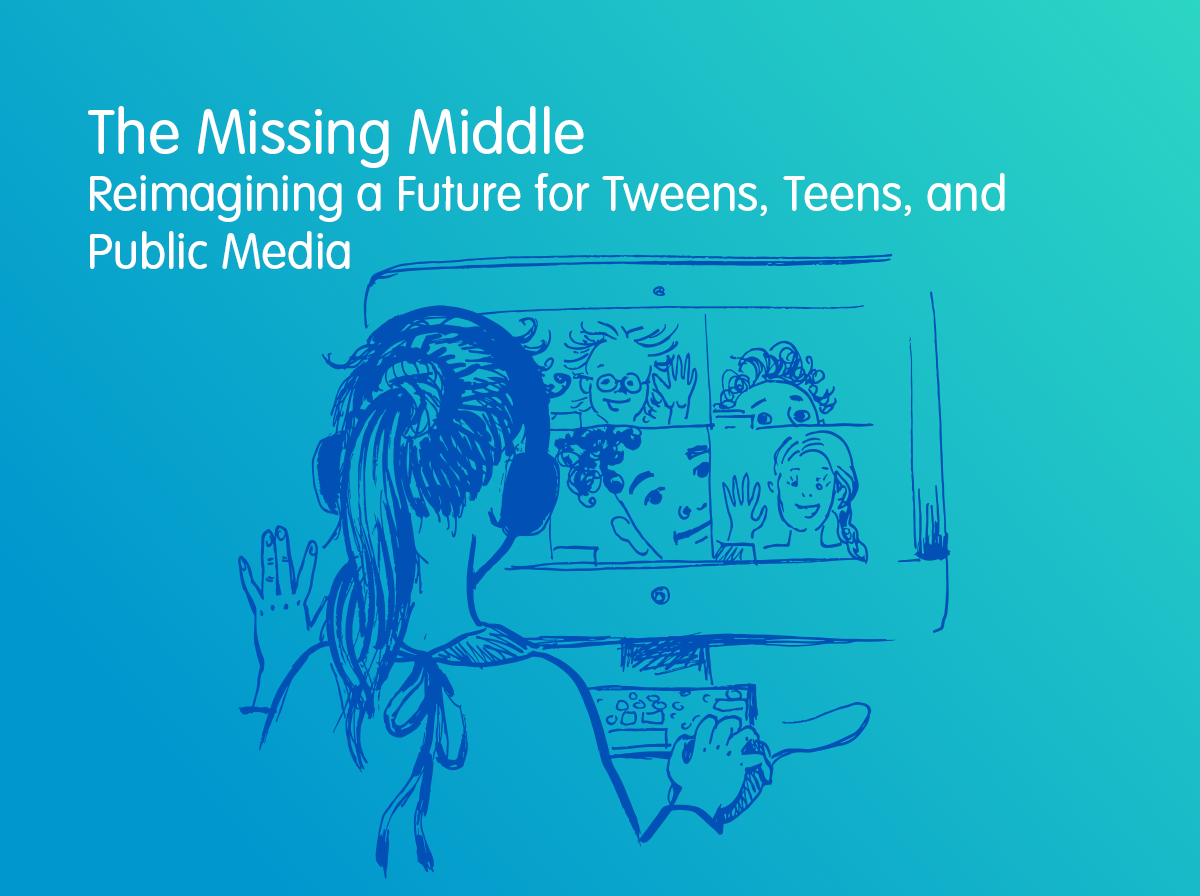“While new technology is connecting us to each other in different and much faster ways, these changes will necessarily have a knock-on effect to how we interact with one another, how younger generations open up to new cultures and ideas, and how we interpret this cultural Tower of Babel from one era to the next.”
–Julian Vigo (Forbes, 2019)
Generation Z, born mainly between 1997 and 2010, inhabit a world with 24/7/365 access to on-demand media, social media, mobile devices, voice assistants, and Google.
But what makes them tick? And how can public media get them to tune in? These are just some of the questions addressed in the Joan Ganz Cooney Center report, The Missing Middle: Reimagining a Future for Tweens, Teens, and Public Media.
To understand what Gen Z wants to stream, content creators and public media must first gain a deeper proficiency of the cultural, political, and social forces shaping and influencing the worldviews of tweens and teens.
Inclusion is Everything
For Gen Z, diversity is more than a buzzword. It is their reality. The 2010 US Census noted that there had been a 50% increase in biracial youth since 2000, up to nearly 4.5 million. According to Pew Research (2020), roughly half (48%) of Gen Z identifies as racially or ethnically diverse.
“There’s this show called Euphoria and they include…a lot of like diverse communities. There’s Black people, White people, Spanish people, like there’s a lot of diversity in the show and not only within, like skin colors and, like races, but also the include LGBTQ+ people in the show.”
—Girl, 17 (Missing Middle, 2021)
The most significant influence on their attitudes towards race was the election of Barack Obama as the President of the United States. For Gen Z, Barack Obama’s election set a precedent and shaped their expectations for both representation and equality.
The Rainbow Connection
As the first generation to grow up in an era when same-sex marriage was considered the norm, equality for their LGBTQ+ friends and family is expected.
“I’d love to see more representations, like with all the LGBTQ community, in children’s media or overall, because I don’t think there’s enough. Also, I think people of color…should be represented more in cartoons.”
—Girl, 13 (Missing Middle, 2021)
Social media platforms such as Instagram and TikTok have also provided teens and tweens with access to communities where they share, learn, support, and connect with other LGBTQ+ youth and allies outside their immediate circle of friends and family. It’s a new reality that would have been unimaginable to older generations.
Ending Mental Health Stigma
Another trait that sets Gen Z tweens and teens apart from previous generations is their willingness to normalize the narrative and end stigma around discussing mental health issues.
“And I also feel like our generation is more open about having mental health issues, and that doesn’t mean you’re a terrible person if you have depression or something. It’s pretty normal.”
—Girl, 15 (Missing Middle, 2021)
Thanks mainly to having access to information, awareness, and mental health professionals creating content on social media platforms like TikTok, Gen Z is more open to acknowledging and talking about their mental health issues, advocating for their friends, and reducing stigma.
Media for the Missing Middle

The key to earning the trust of Gen Z audiences is rooted in listening, acknowledging their life experiences, sharing stories that mirror their lived reality, and creating content that widens the welcome to public media through representation and inclusion to viewers of all races, abilities, genders, ethnicities, and orientations.
One of the primary lessons from The Missing Middle: Reimagining a Future for Tweens, Teens, and Public Media report is that public media can look to the content created by Gen Z, streaming networks, and commercial media as examples of how to connect with the missing middle. For example, streaming networks like Netflix are making diversity and inclusion a priority. The streaming giant recently announced that they are focused on creating content inclusive of people with disabilities (Heasley, 2020).
HBO’s Euphoria attempts to give a realistic look into what it means to be a Gen Z teen. TikTok has created a Black Creatives incubator program designed to bring more diverse voices to the platform. The non-profit Rattlestick created Pride Plays’ Youth Write Now, a two-week free virtual playwriting intensive for LGBTQ youth.
A Roadmap for Public Media
Road Trip Nation and Above the Noise are two PBS programs that already incorporate many of the best practices outlined in the Missing Middle report and provide tangible examples for other public media creators on how to gain the attention of Gen Z and, soon, Gen Alpha viewers.
Road Trip Nation is an excellent example of a program airing on PBS that understands teen and young adult audiences. What makes the program relatable to Gen Z is that it not only features a diverse cast, but they can use the show as an authentic mirror for their own anxieties around figuring out a path in life. The show also distributes bite-sized remixes of their content on Gen Z-centric platforms like Instagram and YouTube to reach their target audience.
Above the Noise is a current event show produced by KQED and PBS Digital Studios geared towards Gen Z audiences. The topics featured on the program reflect teens’ real issues and aren’t afraid to tackle difficult and complex problems. The show takes its short-form video content to where Gen Z audiences are on Instagram and TikTok.
One of the most famous sayings about internet culture is “Don’t read the comments.” But as the tweens and teens interviewed in the Missing Middle study point out, your community is what happens in the comment section. The comment section is an opportunity for public media and content creators to listen and learn from tweens and teens. Both Road Trip Nation and Above the Noise use the comment section to their advantage, using it as a way to open a two-way dialogue between their content and their community.
The Missing Middle: Reimagining a Future for Tweens, Teens, and Public Media is a landmark study that will help public media better understand how to widen the welcome to next-generation public media viewers. The report is a powerful guide that will help creators better understand new youth cultures and assist them in creating more inclusive media that better reflects 21st-century teen life.
 Derek E. Baird is an expert in kids’ content, community, and culture. He currently leads an independent kids media consultancy, working with a global roster of kids media and kid tech companies. He is also an independent research and evaluation consultant focusing on youth cultures and is the author of The Gen Z Frequency: How Brands Tune in & Build Credibility.
Derek E. Baird is an expert in kids’ content, community, and culture. He currently leads an independent kids media consultancy, working with a global roster of kids media and kid tech companies. He is also an independent research and evaluation consultant focusing on youth cultures and is the author of The Gen Z Frequency: How Brands Tune in & Build Credibility.



